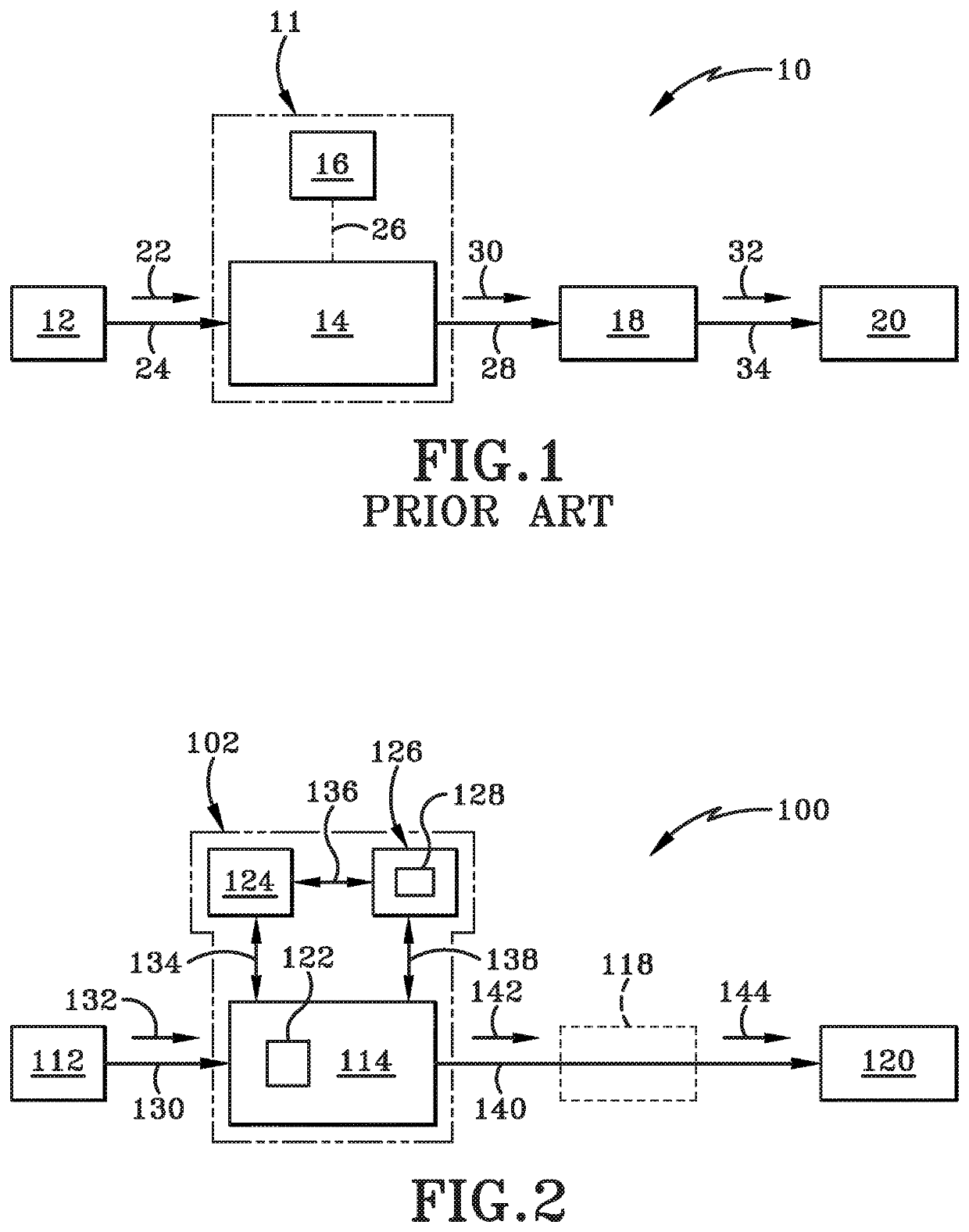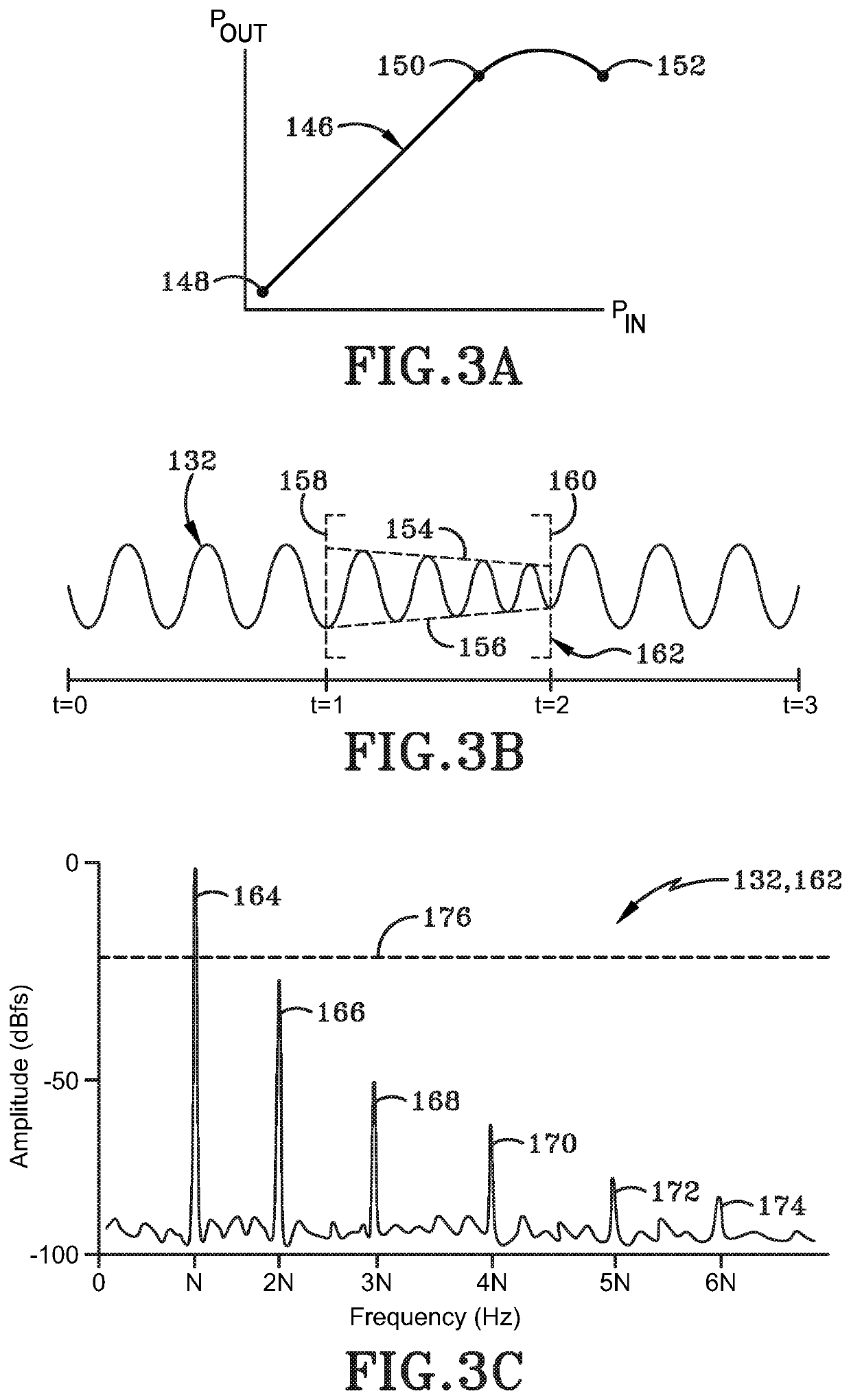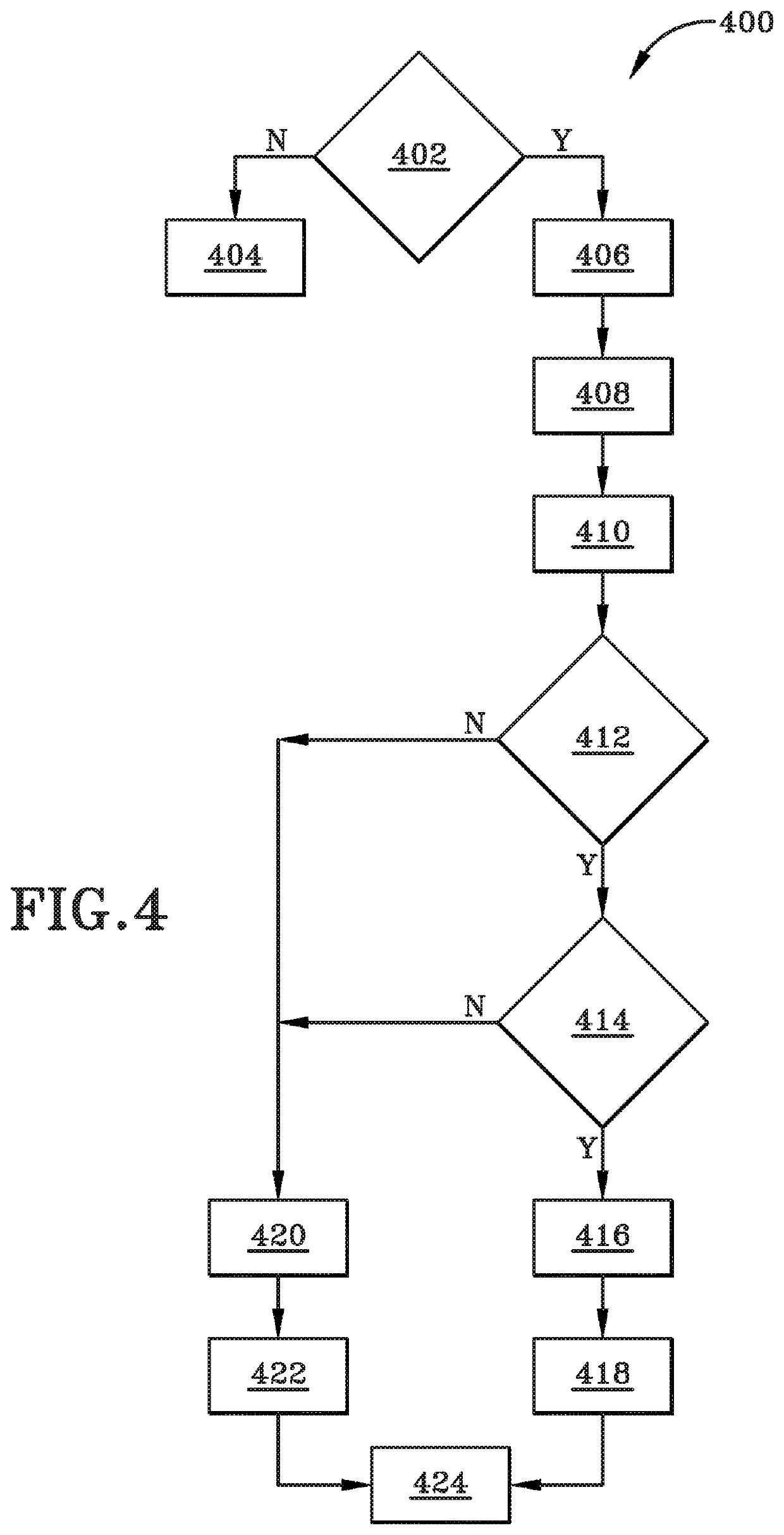System and method for spurious signal detection and rejection
a spurious signal and signal technology, applied in the field of spurious signal detection and rejection, can solve problems such as noise that can disturb downstream hardware devices, noise generated by amplifiers, and problems that continue to exis
- Summary
- Abstract
- Description
- Claims
- Application Information
AI Technical Summary
Benefits of technology
Problems solved by technology
Method used
Image
Examples
Embodiment Construction
[0016]FIG. 1 depicts a conventional or prior art signal detection system is shown generally at 10. The typical conventional signal detection system 10 includes a signal source 12, a signal detection assembly 11 having a receiver 14 and a pulse report generator 16, signal processing logic 18, and a hardware device 20. Components of the signal detection system 10 are arranged in a manner such that signals move in a downstream direction from the signal source 12 to the downstream hardware device 20. As such, portions of the signal detection system 10 may be made with reference as being positioned upstream or downstream relative to other components of the signal detection system 10.
[0017]For example, signal source 12 generates a signal 22 that travels along a link 24 between the signal source 12 and the receiver 14 within detection assembly 11. The link may be any wired or wireless communication link effectuating the transmission of the signal 22. Signal 22 may be a signal of interest t...
PUM
 Login to View More
Login to View More Abstract
Description
Claims
Application Information
 Login to View More
Login to View More - R&D
- Intellectual Property
- Life Sciences
- Materials
- Tech Scout
- Unparalleled Data Quality
- Higher Quality Content
- 60% Fewer Hallucinations
Browse by: Latest US Patents, China's latest patents, Technical Efficacy Thesaurus, Application Domain, Technology Topic, Popular Technical Reports.
© 2025 PatSnap. All rights reserved.Legal|Privacy policy|Modern Slavery Act Transparency Statement|Sitemap|About US| Contact US: help@patsnap.com



